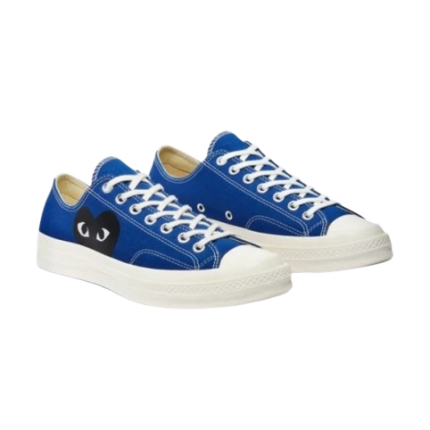Sure! Here’s a 600-word article on Comme des Garçons, complete with a heading and styled in an engaging, informative tone:
In the world of high fashion, few names command as much reverence and intrigue as Comme des Garçons. Founded in Tokyo in 1969 by visionary designer Rei Kawakubo, the brand has consistently defied conventions, redefined beauty standards, and reshaped the fashion landscape for over five decades. It is more than just a fashion label—Comme des Garçons is a philosophy, a movement, and at times, an act of rebellion.
A Legacy Born from Avant-Garde Vision
From the beginning, Rei Kawakubo’s approach to fashion was radical. She launched Comme des Garçons (“like the boys” in French) not to conform to trends, but to challenge them. Kawakubo, who had no formal fashion training, approached design from a conceptual and often architectural perspective. In the early 1980s, when the brand debuted in Paris, it shocked audiences with its black-heavy palette, asymmetrical cuts, and distressed fabrics.
Fashion critics initially labeled the style “Hiroshima chic,” highlighting the torn, deconstructed look that was in stark contrast to the polished glamour dominating runways. But that boldness—those very critiques—are what set Comme des Garçons apart. It wasn’t trying to be beautiful in a traditional sense; it was asking deeper questions about form, identity, and the role of fashion itself.
Innovation Through Deconstruction
Comme des Garçons is widely credited with pioneering the “deconstruction” movement in fashion. Garments often look unfinished or irregular, with visible seams, raw edges, or pieces stitched together in unusual ways. Kawakubo dismantled not just clothing but the very idea of how clothing should look.
Each collection feels more like an art exhibit than a retail release. For example, the Spring/Summer 1997 collection titled “Body Meets Dress, Dress Meets Body” distorted the female silhouette using padding in unexpected areas, challenging ideas of femininity, proportion, and the human form.
What makes Comme des Garçons truly special is its refusal to settle. Kawakubo once famously said, “The meaning is that there is no meaning.” That ethos frees the brand to explore limitless directions—collections might be poetic, political, grotesque, or whimsical—but never predictable.
Beyond the Runway: Commercial Success and Cultural Impact
Despite its avant-garde roots, Comme des Garçons has built a powerful commercial empire. Its more accessible line, Comme des Garçons PLAY, launched in 2002, became an instant cult favorite—especially the heart logo with googly eyes, designed by Polish artist Filip Pagowski. It’s now a global streetwear staple.
Collaborations with brands like Nike, Comme Des Garcons Hoodie Converse, Supreme, and even IKEA have helped bridge the gap between high fashion and streetwear, introducing Comme des Garçons to a new generation of fans. Each partnership retains the brand’s signature edge, proving that mainstream success doesn’t require compromising artistic integrity.
In Tokyo, the Dover Street Market (founded by Kawakubo and her husband Adrian Joffe) acts as a curated wonderland of avant-garde fashion. These multi-brand concept stores blend art, fashion, and retail in a way that disrupts the traditional shopping experience.
The Influence of Rei Kawakubo
Rei Kawakubo’s influence extends beyond Comme des Garçons. She has mentored and supported a slew of other designers, including Junya Watanabe and Kei Ninomiya, under the Comme des Garçons umbrella. In 2017, the Metropolitan Museum of Art’s Costume Institute honored her with a solo exhibition—an honor previously given only to Yves Saint Laurent while alive.
Kawakubo is famously private and rarely gives interviews, preferring to let her work speak for itself. Yet her impact is undeniable. She doesn’t just design clothes—she challenges systems, reshapes norms, and invites us to question what fashion really means.
Let me know if you’d like a more fashion-magazine tone, or something academic or streetwear-focused!
